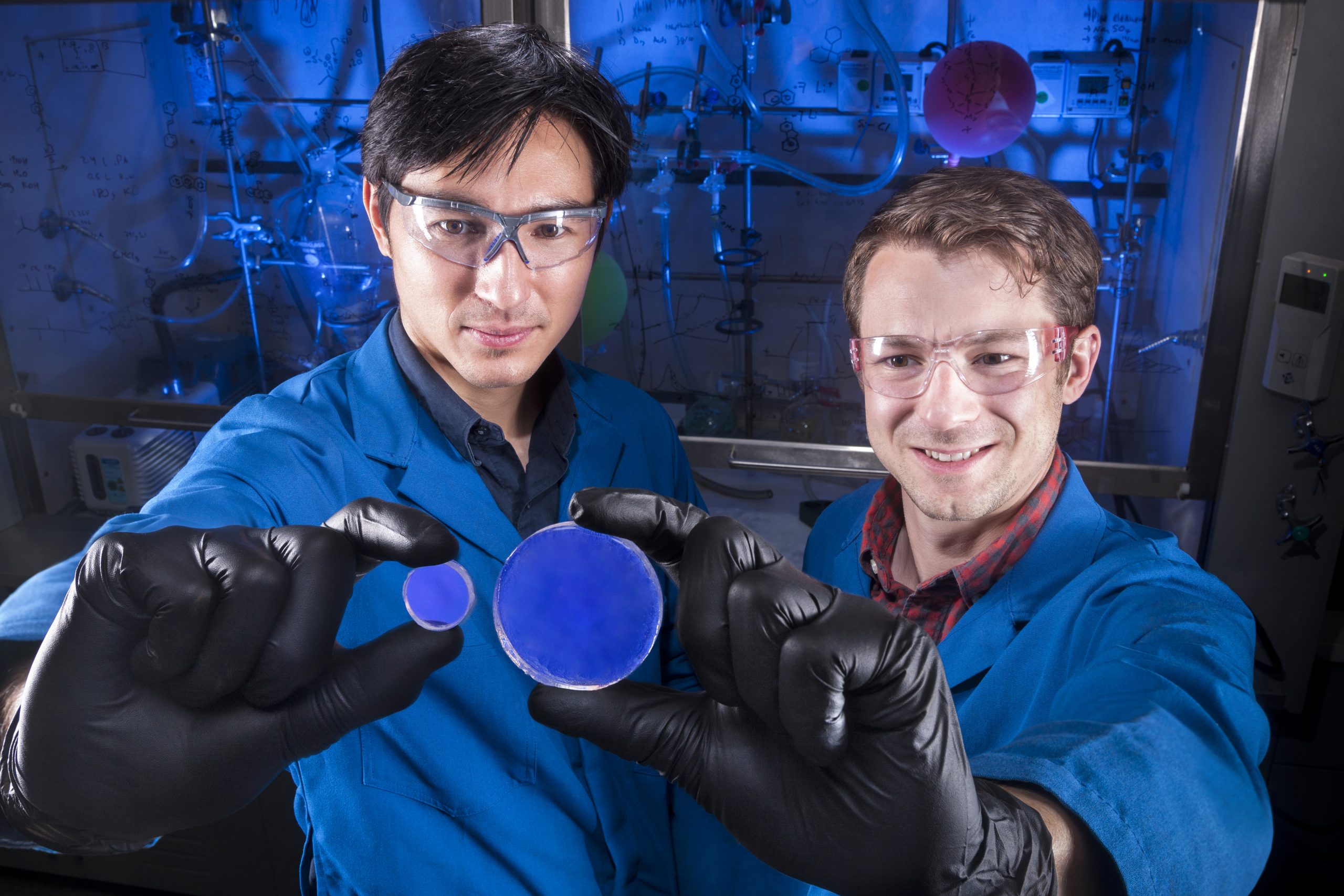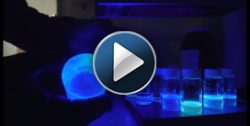
LIVERMORE, Calif. — Blueshift Optics, owned by former Sandia employee Joey Carlson, is working to shift the way radioactive materials are detected, using technology that he helped create at Sandia National Laboratories.
Radiation detection has long been a critical aspect of national security and efforts to make the world safer.
“Agencies are trying to cast this wide net to catch nuclear smuggling, and this is one aspect of that effort,” said Sandia materials scientist Patrick Feng. “You could use this technology at a border crossing, in a handheld detector as someone enters a facility or fly it on a drone to map an area.”
However, the uses of this technology extend far beyond border security.
“It has the potential to provide us with better data from nuclear physics experiments, enhance national security applications both at home and abroad and has applications in fusion energy,” Carlson said.
Feng and Carlson collaborated to develop the state-of-the-art technology known as Organic Glass Scintillators for radiation detection. Sandia recently licensed the technology to Blueshift Optics, paving the way for potential commercial production.

How it’s different
Organic Glass Scintillators emit light in the presence of radiation. It’s different than other technologies because it can more efficiently decipher between neutron and gamma ray radiation, allowing for faster identification of potential threats. They are also simpler and less expensive to produce.
“Gammas are everywhere. We are exposed to gamma radiation right now, so if you have a neutron experiment you need to be able to distinguish them,” Carlson explained. “If you have neutrons, you have something special. This applies to national security, nuclear physics and fusion energy.”
The duo says that this creation advances technology that was developed in the 1950s, a technology many believed had reached its peak.
“This has been a breakthrough; it remained stagnant for decades in terms of the types of materials used. This is the first time something revolutionary like this has come along,” Carlson said.
Feng likens the development process to what a cook does when de-crystallizing honey.
“We developed a material that behaves like window glass; we call it organic glass,” he said. “When a quartz crystal is melted and supercooled, it behaves differently. It transmits light equally in all directions and is more resistant to cracking. It’s like when honey is crystalized. It’s still honey but possesses different physical properties because of its molecular structure.”
Carlson says when all these materials work together, you have a new way of detecting radiation.
“Ionizing radiation is challenging to detect, so the scintillator transforms energy into visible light for easier detection. These scintillators are coupled with high sensitivity photo multiplier tubes or detectors that read out the signals.”
The only technology that comes close to this creation is stilbene crystals, which must be grown. They are fragile, cumbersome to produce and limited in size.
“You can’t grow them large enough to support their use in many cases,” Feng explained. “That is the key advantage in what we’ve developed. The manufacturing process allows us to mix Organic Glass with a polymer. You can pour, mold and manufacture on a large scale if needed.”
Getting it out into the world
The big goal now is to commercialize it with the help of Blueshift Optics, based in Oakland, California. Carlson left the labs through the Entrepreneurial Separation to Transfer Technology program to start the business in 2020. The team sees many potential uses, including by fusion energy companies for high level experiments. But, as Feng emphasizes, the most significant application could be safeguarding our country.
“It has many different uses to support the same goal: finding radiological material that someone is attempting to subvert or smuggle,” he said. “This is crucial in supporting Sandia’s mission.”
This team hopes it won’t be long before the technology is deployed at U.S. ports and border crossings and maybe even in the hands of the U.S. armed forces.
“Our materials produce a lot more light, double compared to what used to be state-of-the-art,” Feng said. “There are fewer false positives, and you can detect rarer events with our material. You can detect them faster or from a greater distance. These are things that matter. At a border crossing, it can take 30 minutes to scan one truck. That doesn’t work. We are striving to enhance national and international security and safety; that is the mission. We need practical technology, and we make the practical possible.”
For more information, visit blueshiftoptics.com.